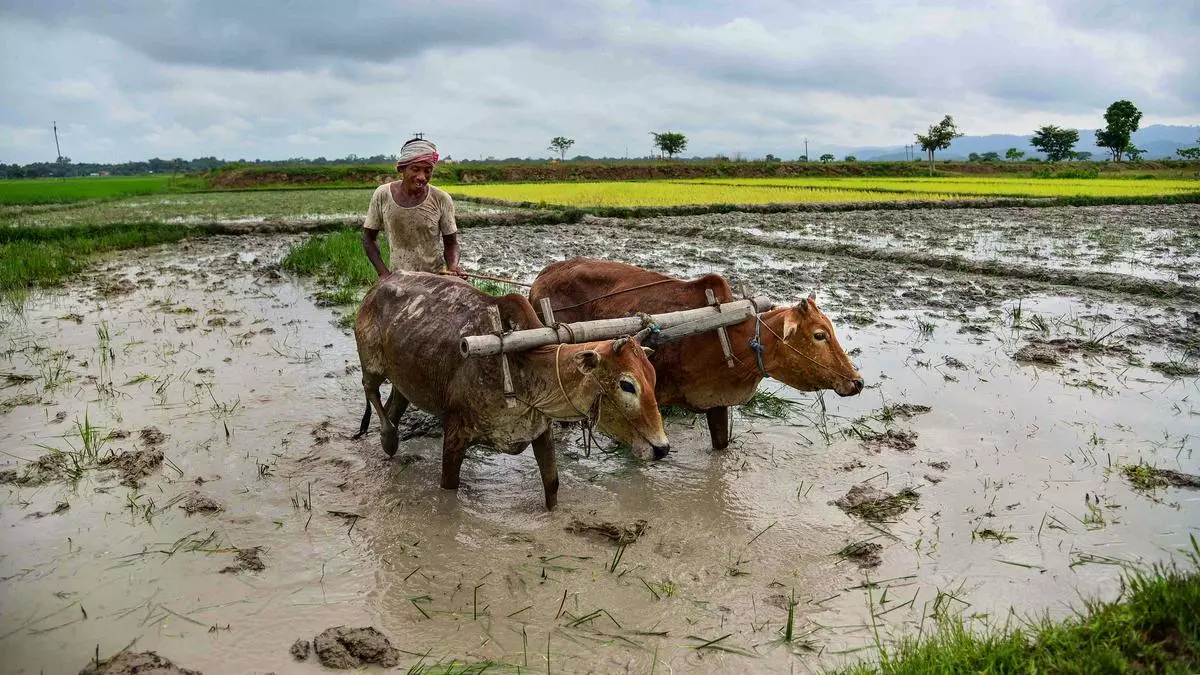India’s South-West monsoon ends with 8% above normal rain
The South-West monsoon season ended on Monday with the country as a whole receiving 7.6 per cent above normal rains during the June-September period, with as much as 89 per cent of the geographical area reporting ‘normal’ or higher rainfall. This will potentially help the country’s expectation for a bumper production of winter-sown rabi crops.
The seasonal rainfall during the June-September period has been recorded at 93.48 cm against 86.86 cm, considered the long-period average (1971-2020) for the period. Rainfall between 104 and 110 cm is categorised as “above normal” by the India Meteorological Department (IMD). The south-west monsoon has a share of 75 per cent in India’s annual normal rainfall of 116 cm and plays a crucial role in crop production as 48 per cent of the cultivable area is not irrigated.
Central major beneficiary
The geographical distribution shows that the Central meteorological division received 19 per cent surplus rains, the south peninsula 14 per cent higher than normal, and the north-west region 7 per cent above normal in the current year’s monsoon season. Only, the east and north-west region received 14 per cent less than normal rainfall, but quantitatively it is still the highest among all regions at 117.9 cm.
IMD had predicted that the monsoon this year would be in the “above normal” range, quantitatively 106 per cent of the LPA, with a model error of ± 4 per cent. It had also forecast that the monsoon was likely to be above normal over Central and Southern India, normal over the North-West region, and below normal over North-East India, which has proved correct this year.
IMD data showed that India had received 11 per cent above normal rain in September. While the east and north-east region got 19 per cent below normal precipitation this month, the south peninsula received 7 per cent lower than normal rain. However, September proved good for the Central region that recorded a 32 per cent surplus, and the north-west that got 29 per cent above normal rainfall.
Punjab, Arunachal Pradesh, Manipur, Nagaland and Jammu and Kashmir are only five States/union territories that witnessed below normal or deficient rainfall this year, IMD said in a bulletin.
Good spatial distribution
“The distribution of rainfall is good this year, both in terms of monthwise and spatial spread. However, the cause of concern is excessive continuous rains for a few days which led to flooding in some states,” said a senior scientist of IMD.
IMD had predicted this year monsoon to be in the “above normal” range, quantitatively 106 per cent of the LPA, with a model error of ± 4 per cent. It also had forecast monsoon was likely to be above normal over Central and Southern India, normal over North-West region and below normal over North-East India, which proved correct this year.
The rainfall was 11 per cent deficient in June, 9 per cent surplus in July and 16 per cent surplus in August.
For the September rainfall, IMD data showed that India had received 11 per cent above normal rain. While the east and north east region got 19 per cent below normal precipitation in the last month of the season, the south peninsula received 7 per cent lower than normal rain. However, September proved good for Central region that recorded 32 per cent surplus and also for north-west that got 29 per cent above normal rainfall.
From September 23, monsoon has started retreating from some parts of west Rajasthan and Gujarat, against the normal date of September 17. The monsoon should have completely withdrawn by now from Rajasthan, Haryana, Punjab, Himachal Pradesh, Jammu and Kashmir, Uttarakhand, west Uttar Pradesh and half of Gujarat as well as most parts of north-west MP. However, the withdrawal line passes through Gujarat, Rajasthan and western Punjab, the IMD’s scientist said.
